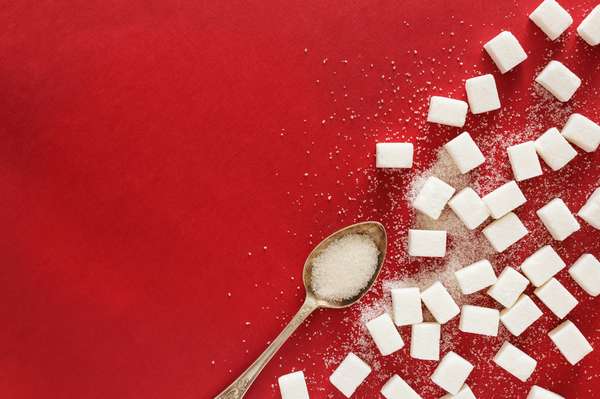
Think you’re making smart food choices? You might be—but your blood sugar doesn’t always agree.
We all know candy and soda can send glucose levels soaring, but what about the everyday foods we trust to be “healthy” or harmless? Turns out, some pantry staples and go-to meals can spike your blood sugar just as dramatically, and you’d never guess which ones.
Whether you're managing diabetes, watching your energy levels, or simply trying to eat smarter, understanding these sneaky culprits can make a big difference.
The hidden sugar in everyday foods
It’s true that sugar isn’t exactly a health hero, especially as we age and our risk for type 2 diabetes climbs. But the real issue might not be the occasional dessert—it’s what’s happening quietly, day after day, in the way we eat.
According to wellness advocate Steve Bennett, the problem is how often our bodies are asked to process sugar throughout the day. “Cereal for breakfast, bread for lunch, pizza for dinner—insulin is being called into action so frequently that our cells become less responsive,” Bennett explained. That constant demand can lead to insulin resistance, a major contributor to type 2 diabetes.
In his book Sugar Tolerance, Bennett argues that our bodies are built to handle occasional spikes in blood sugar—not the nonstop surges caused by modern eating habits. Even foods we consider “normal” or “harmless” can keep our glucose levels elevated, often without us realizing it.
If you’re trying to protect your long-term health, it’s worth rethinking what’s on your plate and how often your body has to work overtime to keep up.
The four everyday foods that spike blood sugar
Let’s take a closer look at four everyday foods that can send your blood sugar soaring, and how to enjoy them with fewer spikes.
1. Morning cereals
Starting your day with cereal might seem like a smart move, but many boxed options—even those labeled “whole grain” or “heart healthy”—are loaded with fast-digesting carbs. A single serving of cornflakes, for instance, can hit your bloodstream like eight teaspoons of sugar. That’s a tough way to kick off your morning if you’re aiming for steady energy.
Better choices: Trade sugary cereals for protein-packed breakfasts like scrambled eggs, plain Greek yogurt, or a handful of almonds. If toast is non-negotiable, top it with avocado, eggs, or leafy greens to slow the sugar rush.
2. White rice
White rice is a dinner table staple in many households, but it’s also a fast-acting carb that can spike blood sugar quickly. Brown rice offers a bit more fiber, but it’s still high on the glycemic scale.
Smart swaps: Try cauliflower rice for a low-carb twist, or go with quinoa for a boost of protein and fiber. Both are easy to cook and pair well with your favorite stir-fry or stew.
3. Potatoes
Mashed, baked, or fried—potatoes are comfort food royalty. But they’re also high in starch and can cause dramatic blood sugar swings, especially when served hot.
Tips for potato fans: Cooling cooked potatoes before eating (like in a potato salad) increases their resistant starch, which helps blunt the glucose spike. Or explore celeriac—a fiber-rich root vegetable that’s surprisingly versatile and can be mashed, roasted, or boiled just like spuds.
4. High-sugar fruits
Fruit is packed with nutrients, but not all varieties are blood sugar–friendly. Tropical fruits like bananas, mangoes, and pineapples are naturally high in sugar and can cause quick spikes.
Berry smart: Berries like raspberries, blueberries, and blackberries are lower in sugar and rich in antioxidants.
Bonus: They may help reduce blood sugar spikes when eaten alongside carb-heavy meals. If you’re a banana lover, go for less ripe ones—they have a lower glycemic impact.
Also read: Are you using the right sugar substitute? Dietitians reveal the top picks for managing blood sugar.
How to minimize blood sugar spikes
You don’t have to ditch all your favorite foods to keep your blood sugar in check. With a few smart strategies, you can enjoy your meals while supporting steady energy and long-term health. Here are some easy ways to make that happen:
- Start with fiber: Begin meals with leafy greens or fiber-rich vegetables. They slow digestion and help prevent sudden sugar spikes.
- Balance your plate: Pair carbohydrates with healthy fats and proteins—think eggs, nuts, or avocado—to help smooth out blood sugar responses.
- Mind your portions: Even nutritious carbs can add up. Keeping an eye on serving sizes can make a big difference.
- Eat earlier: Your body tends to process sugar more efficiently in the morning, so front-load your bigger meals and skip late-night snacks when possible.
- Explore new options: Shake up your routine with fiber-rich swaps like quinoa, cauliflower, or celeriac. They’re versatile, satisfying, and gentler on your blood sugar.
Bottom line: It’s not just desserts and sodas that affect blood sugar—many everyday foods can have a similar impact. But with a few thoughtful tweaks to your meals, you can stay energized, feel more balanced, and support your health without giving up the foods you love.
Why this matters more as we age
In the US, nearly 1 in 3 adults aged 65 and older has diabetes, and 50% have prediabetes. Aging bodies often produce less insulin and become less responsive to it, especially when paired with reduced muscle mass and physical inactivity.
As insulin sensitivity declines, older adults may find that everyday staples—like bread, rice, or fruit—trigger sharper glucose responses than they did in their younger years.
The key message for our community is clear: small, informed changes to what we eat and when we eat it can make a profound difference to our blood sugar control and overall health. Whether it's starting your meal with a handful of cherry tomatoes or swapping your morning cereal for Greek yoghurt with berries, these adjustments are both achievable and sustainable.
What's your experience with managing blood sugar? Have you noticed any foods that particularly affect your energy levels, and are you willing to try the vegetables-first approach at your next meal?






